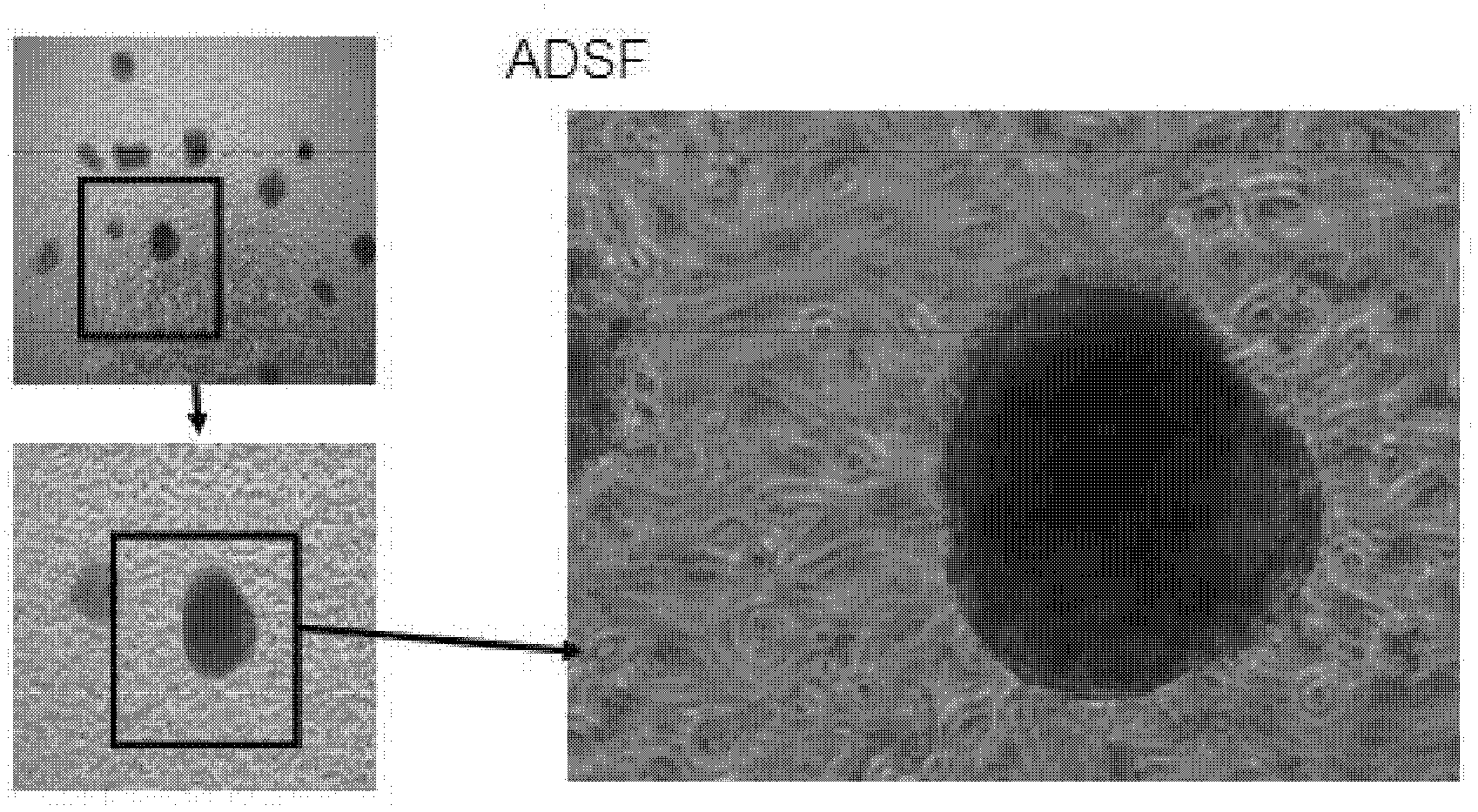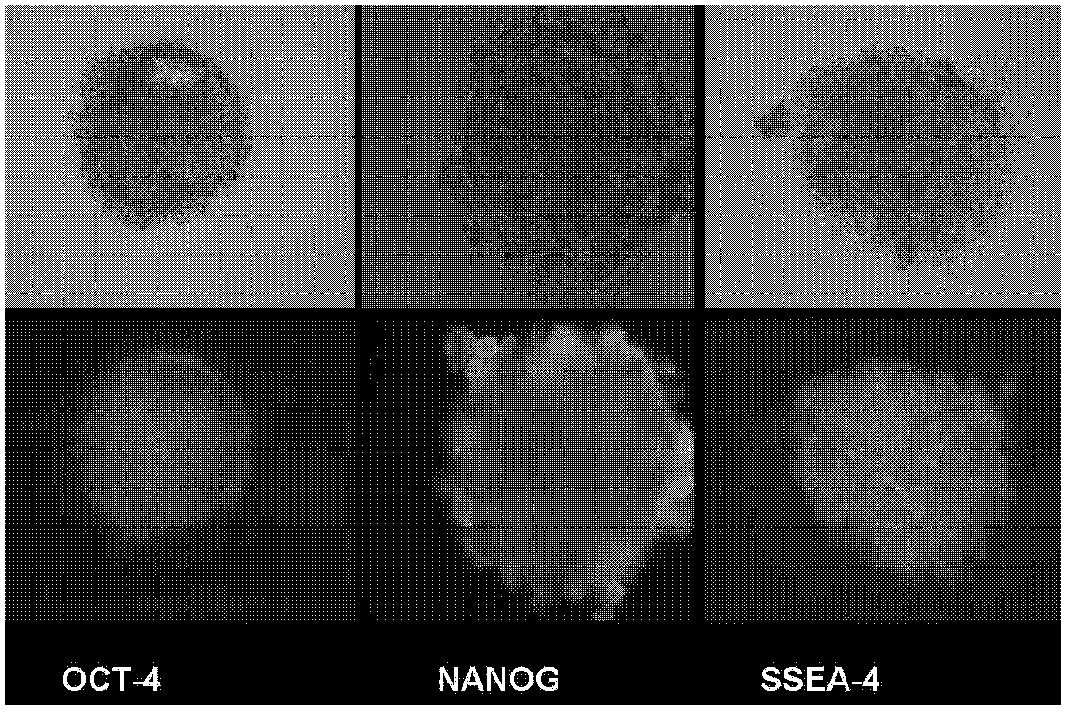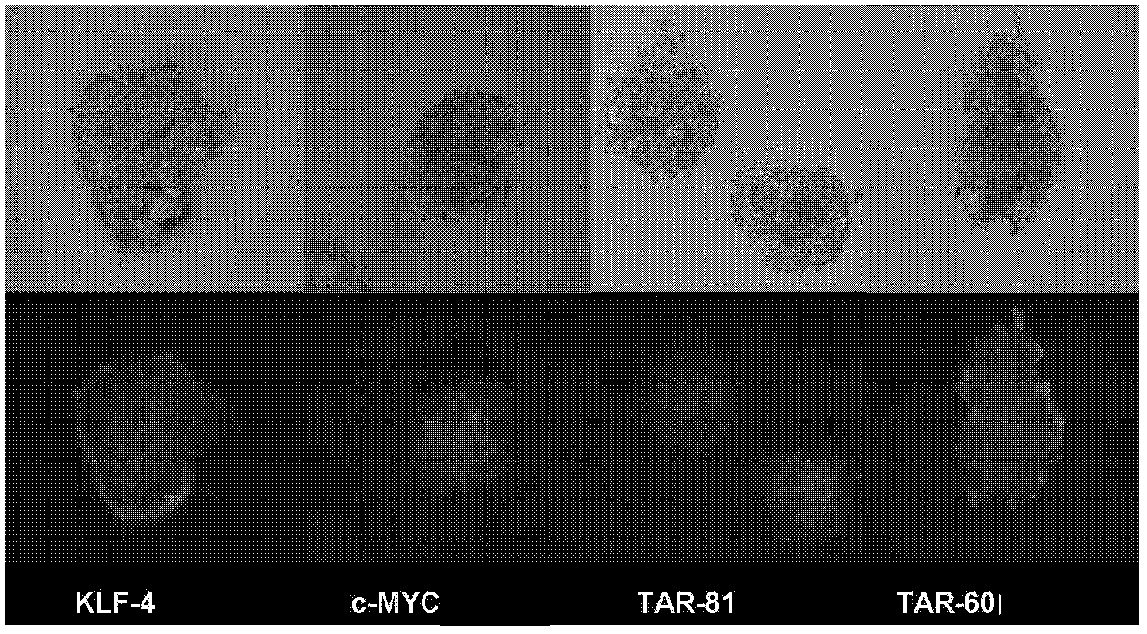Materials and methods for generating pluripotent stem cells
A technology of pluripotent stem cells and pluripotent stem cells, which can be used in biochemical equipment and methods, artificially induced pluripotent cells, embryonic cells, etc., and can solve problems such as obstruction, immune incompatibility, and immune rejection.
- Summary
- Abstract
- Description
- Claims
- Application Information
AI Technical Summary
Problems solved by technology
Method used
Image
Examples
preparation example Construction
[0041] Preparation of AEC cells
[0042] In one embodiment, amniotic epithelial cells (AEC) are used as a trophoblast for somatic cell culture to induce somatic cells to dedifferentiate into iPS cells, ie "reprogramming". AECs originate from the early inner cell mass of the blastocyst about 8 days after fertilization. The term "amnion" refers to the fetal membrane, which is an important material transport channel between the pregnant woman and the fetus. AECs can be derived from mammals such as humans, pigs, cattle, sheep, mice, and rats.
[0043] In suitable embodiments, the AECs are human AECs. hAECs were derived from human amnion. Those skilled in the art can use known methods to further purify and enrich active cells. Alternatively, the amnion tissue removes the chorion and other placental tissue. The amnion layer can be gently peeled off from the underlying chorionic layer using forceps and a sterile scalpel. The amnion layer can be mechanically dissociated or treat...
Embodiment 1
[0086] Example 1 Preparation of human amniotic epithelial cells.
[0087] This example describes the preparation of human amniotic epithelial cells (hAECs). After the human amniotic membrane was peeled off from the placenta of pregnant women by caesarean section, the underlying spongy layer and fibroblast layer were scraped off to obtain the amniotic membrane containing the amniotic cells and the basement membrane layer. In the flask, add RPMI 1640 medium, cut it into pieces with scissors, add 0.25% trypsin / EDTA, after half an hour of digestion, add trypsin / EDTA again to digest for about 15 minutes, after centrifugation, the obtained cells are seeded in 6-well plates , add DMEM medium + 10% fetal bovine serum (PAA Austria) and antibiotics at 37°C, 5% CO 2 Cell culture incubator.
Embodiment 2
[0088] Example 2 Isolation of adult dermal fibroblasts (ADSF).
[0089] This example describes the preparation of adult dermal fibroblasts (ADSF). Adult skin tissue or scar tissue was isolated and placed in cold PBS. The isolated cortex was chopped into 1mm2 tissue pieces, incubated with PBS containing 0.25% trypsin, 0.2mg / ml DNase I at 37°C for 30min, and incubated with DMEM containing 15% heat-inactivated horse serum. And, centrifuge at 1000rpm for 5min, collect the cells, add DMEM medium (containing 5% heat-inactivated horse serum), and adjust the cell concentration to 1×10 6 / ml, inoculated into a six-well culture plate, placed at 37°C, 5% CO 2 Incubator cultivation. The cells were subcultured after adherence to allow the cells to proliferate.
PUM
| Property | Measurement | Unit |
|---|---|---|
| pore size | aaaaa | aaaaa |
Abstract
Description
Claims
Application Information
 Login to View More
Login to View More - R&D
- Intellectual Property
- Life Sciences
- Materials
- Tech Scout
- Unparalleled Data Quality
- Higher Quality Content
- 60% Fewer Hallucinations
Browse by: Latest US Patents, China's latest patents, Technical Efficacy Thesaurus, Application Domain, Technology Topic, Popular Technical Reports.
© 2025 PatSnap. All rights reserved.Legal|Privacy policy|Modern Slavery Act Transparency Statement|Sitemap|About US| Contact US: help@patsnap.com



